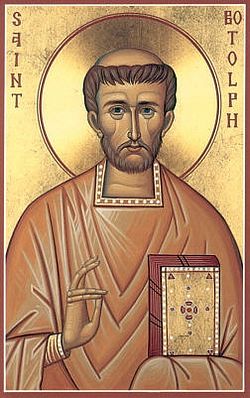
Botolph was born in about 615 in the kingdom of East Anglia and so was among the first to be baptized there. The younger brother of Botolph named Adolph (Adulf) is venerated as a saint as well. Both brothers were most probably related to the royal family. One of the East Anglian kings soon lapsed from the faith, but by the Lord’s providence an Irish missionary St. Fursey was sent to these lands and he founded a monastery at Burgh Castle in Norfolk. The brothers were educated at this monastery and were tonsured monks there. In about 640 the pagan king Penda of Mercia attacked East Anglia and the holy brothers had to move to Sussex in southern England, where they lived for some time at the monastery in Bosham which had been founded by another Irishman, St. Dicul.
In 647, Botolph visited a monastery in Gaul, where he gained experience in spiritual life and received excellent preparation. Returning to his native England, the saint undertook an extensive missionary work. After death of the pious King Anna of East Anglia in 654 at the hands of a pagan king, St. Botolph in memory of Anna built his most famous monastery in the place known as Ikenho. Nearly all researchers identify this with the hamlet of Iken in north-eastern Suffolk where the very ancient former monastery church of St. Botolph survives to this day. In the 7th century this monastery became one of the largest and most influential spiritual centres in England. In Iken St. Botolph struggled much against the demons who dwelled in that area in great numbers and vexed him continually. By the power of the sign of the cross and through his austere ascetic life the venerable man vanquished them and drove them away from the area.
Abbot Botolph gathered around him many brethren, instructed them in the spiritual life and became famous as a wise and learned mentor. Everybody saw a loving and caring father in him. He himself cultivated the land in Iken and thanks to his labours the formerly swampy soil around Iken became very fertile. Already during his life, St. Botolph was loved all over England for his holy life, wisdom, miracles of healing, prophecies and for driving out evil spirits. He was a good example for his spiritual children in all things. According to his life, “All loved Botolph: he always was humble, modest, friendly and mild in communication, proved the truth of his sermons by example of his life… He taught his monks the rules of Christian perfection and the decrees of the Church Fathers. He thanked God both in good and sorrowful times alike, knowing that He makes everything for the good of those who love Him”. The saint excelled in extreme mercy, poverty and kindness.
Once he gave all the monastery’s food supplies to the poor. The brethren started complaining, but at once they saw boats moving towards the monastery on the river, filled with gifts from generous donors. The saint did not stay only in Iken. He made many missionary journeys, founding numerous churches and monasteries. There were many navigable rivers in East Anglia, so it was easy for him to travel and whenever Botolph stopped, he always preached the Gospel. That is why many churches dedicated to St. Botolph stand on river banks—they were originally founded by him or his disciples. There are very many holy sites, associated with this glorious saint in Norfolk, Suffolk, Essex, and even to the south (Kent and Sussex) and to the north (Lincolnshire).
On his missionary trips, Botolph reached even the north and west of England, where, for example, he founded the monastery of Much Wenlock in Shropshire. By the end of his life, Iken had become so famous that priests, abbots, learned men and ordinary people flocked to this centre from all corners of the country. A tireless missionary, wonderworker and father of monks, St. Botolph reposed in 680 after a long illness. His brother St. Adolph reposed in the same year. Veneration of St. Botolph as a saint began right after his death.
Monastic life flourished in Iken till the mid-9th century, when the monks had to leave it due to the frequent raids of the Vikings. But the monastery church continued to exist. Late in the 10th century St. Ethelwold of Winchester divided and translated the relics of St. Botolph: various portions of his relics were translated to Ely, Bury St Edmunds, Thorney (where the local church is dedicated to St. Mary and St Botolph to this day) and London. On the way to London the procession with relics made stops, and at each stop a church was later erected in memory of the saint. One of these stops was in Colchester in Essex, where in medieval times an Augustinian Catholic Priory of St. Botolph was founded, the ruins of which have survived.
In London St. Botolph’s relics were kept at Westminster Abbey, and churches at all four gates of London were dedicated to him.1 In the 10th century, a cross was erected in Iken in commemoration of St. Botolph’s works, and by a true miracle of God this cross shaft was discovered again in 1977 on the same site. Now this cross is kept at Iken church as a relic. Though his holy relics were lost or hidden during the Reformation, St. Botolph is greatly venerated by English Christians to this day. Dozens of churches are dedicated to him in most regions of England (Suffolk, Norfolk, Cambridgeshire, Essex, Kent, Sussex, Hertfordshire, Buckinghamshire, Oxfordshire, Warwickshire, Northamptonshire, Rutland, Lincolnshire and Yorkshire, in addition to several churches in London) and even Scotland. Over 10 towns and villages are named after St. Botolph. Orthodox and Catholic believers make pilgrimages to sites associated with him.
St. Botolph has been venerated in many countries outside Britain—in Germany, Sweden, Denmark, Holland, where many churches are dedicated to him. In the 11th century, his veneration reached Kievan Rus’ and more recently it reached North America. In England and the whole of Western Europe St. Botolph is mainly venerated as patron-saint of travellers, as the saint travelled much himself. Among those who especially prayed to St. Botolph were also merchants, peasants, farmers and he was considered as a patron of markets, fairs, fields, crops, cattle, border regions and trade.
From many sites associated with St. Botolph we may stop at three. St. Botolph’s Church in Iken, Suffolk, is indeed a quiet, solitary place, full of the grace of God, with a special atmosphere. The saint’s presence is particularly felt here as he blessed it by his prayer. As in the time of Botolph, today Iken is a remote site on the south bank of the River Alde near its mouth. The area is like a peninsula, as it is surrounded by river arms from three sides. There are many former bogs, heaths, forests and fields around. The church stands on the promontory from which very picturesque views open, and the North Sea is nearby. The village and church can be reached by a narrow country road; this site was very suitable for a monastery and contemplative life.
The present church standing on the site of the Botolph’s monastery is mainly early Norman, some of its parts are Saxon, and the chancel with the tower are late medieval. Pilgrims visiting this shrine feel comfort and calm, the spirit of prayer of the place, as if everything here has absorbed the prayer of holy men who lived here for many centuries. It is a site that can be strongly recommended for pilgrims to England. The Saxon cross shaft (mentioned above) is kept in the nave and available for veneration; there is also an Orthodox icon of St. Botolph in the church. The church is now Anglican.
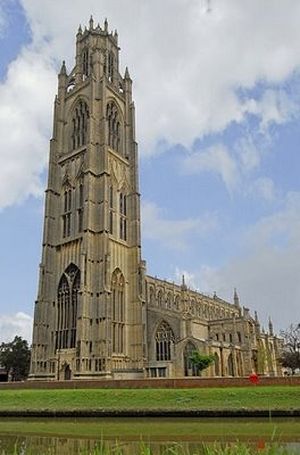 St. Botolph's Church in Boston, Lincolnshire
St. Botolph's Church in Boston, Lincolnshire
St. Botolph’s Church in Boston, Lincolnshire, stands on the site of the church or small monastery, probably built by St. Botolph during his missionary journeys. The name “Boston” means “Botolph’s stone”, or, more exactly, “Botolph’s cross”; thus the whole town (and later the whole city in the USA) was named after a cross erected by the saint during his preaching. St. Botolph has been venerated in Boston from time immemorial and the local St. Botolph’s fair was famous all over England. The building of the present huge church of St. Botolph dates back to early 16th century. Remains of a church of 12th century were discovered under the altar not long ago.
This unique church has a tower which is one of the highest parish church towers in the world (excluding spires) and is 83 metres in height. Though this church never possessed relics, it was surely built as a memorial to Botolph, whose stone statue stands high on the church tower, looks down on the town and blesses it by its raised hand. John Cotton, a theologian and famous Puritan figure, served in this church in the early 17th century before moving to serve in Boston, Massachusets, hence the name of this city. The population of Boston is about 35,000 people and the church is located near the market square.
The church and holy well of St. Botolph in the village of Hadstock, Essex, is another lovely ancient site, associated with our saint for over 1300 years. The church is Saxon; the saint either built it himself or it was rebuilt later. Modern scholars date it to the 11th century. The main oak door of the church is Saxon, and experts consider it to be the oldest surviving church door in the world. A Saxon grave with a very old coffin were discovered in the south transept not long ago. Relics of some saint, perhaps even a portion of St. Botolph’s relics, were probably kept here, but there is no written evidence of it. St. Botolph’s well, the water of which healed scrofula and other skin diseases, is near the church. It is situated a little north of the church’s main entrance in a quiet and pretty place in a garden.
Holy Father Botolph, pray to God for us!

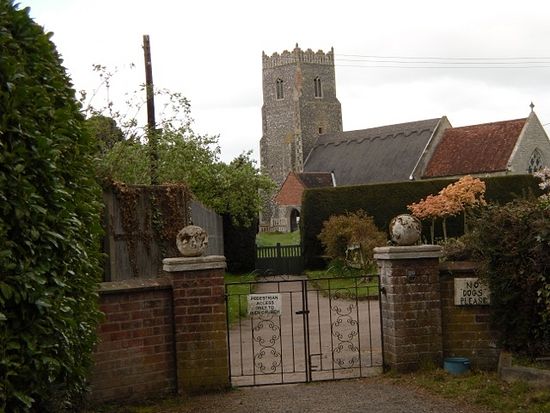
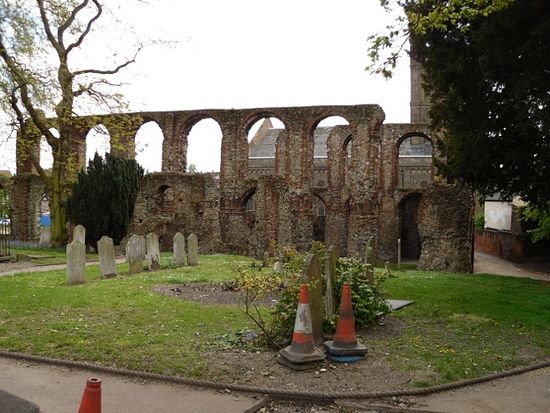
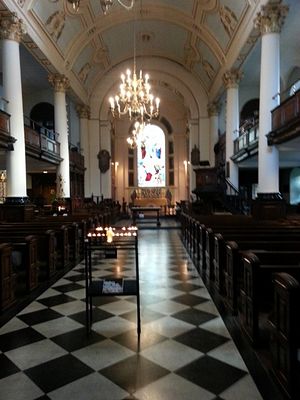
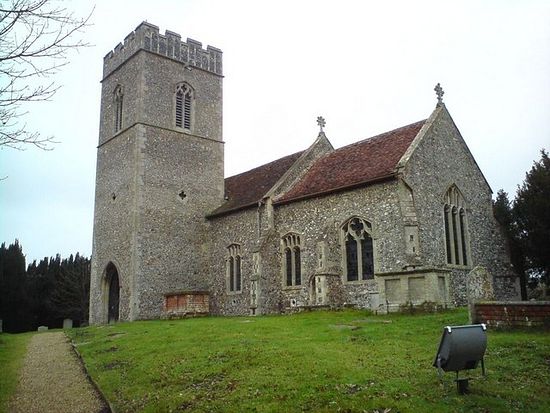
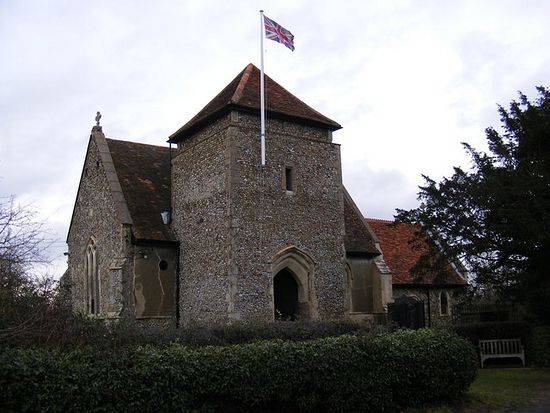
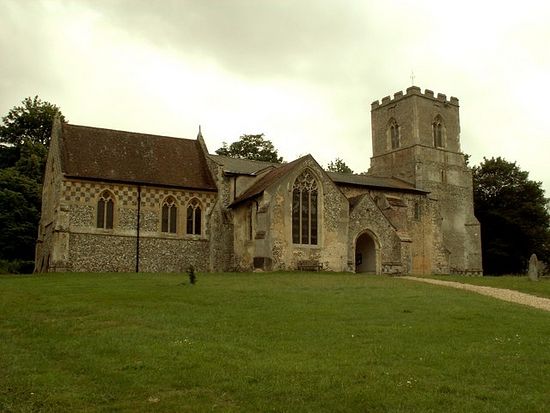
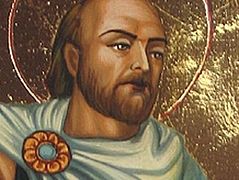
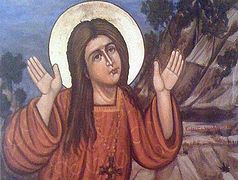
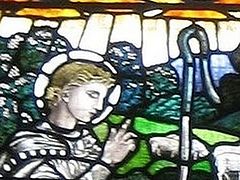
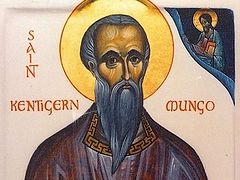
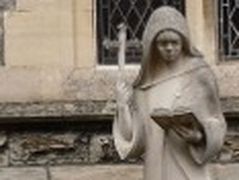

Thank you for expanding the information, and for such a well written article.